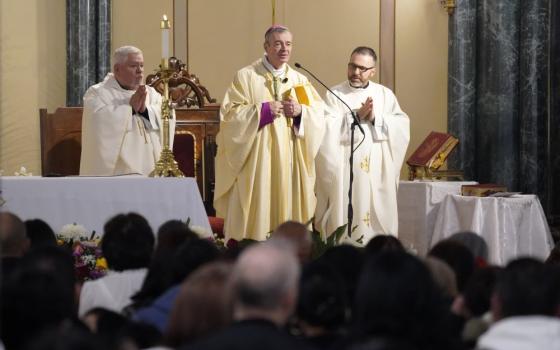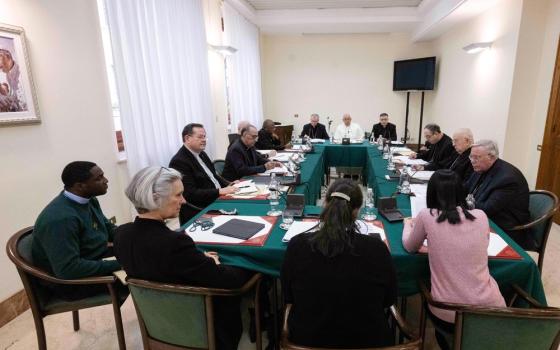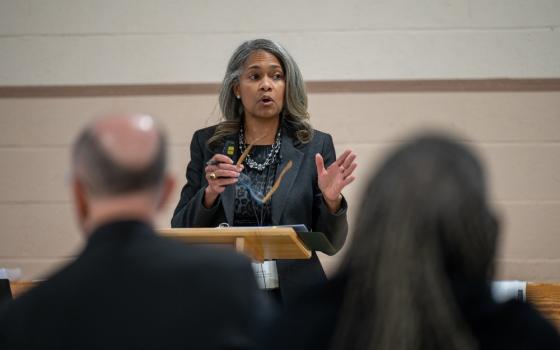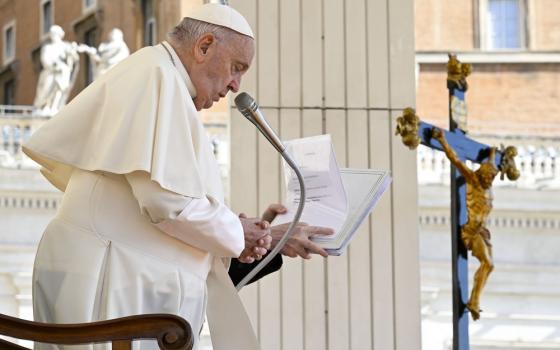"If you want to be hopeful, you have to do hopeful things." That's the advice of Daniel Berrigan. He's spent his life doing hopeful things for peace and justice, and has become a source of hope for many. As for me, I've tried to do hopeful things, but I find it usually just brings me to the edge of hope. Sometimes I can almost taste hope, but more often than not, it's just outside my reach. But that's OK. Hope, I'm learning, is a journey. Often, it demands the risk of coming close to despair. That's why hope requires steadfast action. For Easter people stuck in a Good Friday world, active hope is a necessity. It's a stubborn way of life. Hope is daily choice.
 That's one of the lessons from Joanna Macy and Chris Johnstone's magnificent new book, Active Hope: How to Face the Mess We're in without Going Crazy (New World Library, 269 pp., $14.95, activehope.info). Active hope is something you choose, they suggest. If we want hope, we have to choose hope and join the struggle for hope. We don't want to go crazy with despair and add to the craziness of the world. As people of resurrection, we choose to live in hope, and so we take action for the hope of a new world.
That's one of the lessons from Joanna Macy and Chris Johnstone's magnificent new book, Active Hope: How to Face the Mess We're in without Going Crazy (New World Library, 269 pp., $14.95, activehope.info). Active hope is something you choose, they suggest. If we want hope, we have to choose hope and join the struggle for hope. We don't want to go crazy with despair and add to the craziness of the world. As people of resurrection, we choose to live in hope, and so we take action for the hope of a new world.
My friend Joanna Macy is one of nation's great teachers of peace, hope and nonviolent action. An eco-philosopher, Joanna is a scholar of Buddhism, general systems theory and deep ecology, and has been active in peace and justice movements for five decades. This milestone of a book, an extraordinary accomplishment, is the fruit of her life's work. Her colleague, Chris Johnstone, is a physician and a specialist in the psychology of resilience, happiness and positive change.
Active Hope addresses the awesome moment we're in -- catastrophic climate change, the depletion of oil, economic upheaval, extreme poverty, permanent war and mass extinction -- and seeks to strengthen our capacity to face this crisis so we can respond with resilience and creative power. Drawing on decades of teaching on empowerment ("the Work That Reconnects," as Joanna's program is called), the authors guide us through a transformational process informed by mythic journeys, modern psychology, spirituality, social movement analysis and holistic science. They give us tools to face the mess we're in and do our part in the collective transition that must happen so that we can create a more sustainable, nonviolent world.
They offer two interesting definitions of hope:
Active Hope is a practice. Like tai chi or gardening, it is something we do rather than have. It is a process we can apply to any situation, and it involves three key steps. First, we take in a clear view of reality; second, we identify what we hope for in terms of the direction we'd like things to move in or the values we'd like to see expressed; and third, we take steps to move ourselves or our situation in that direction. Since Active Hope doesn't require our optimism, we can apply it even in areas where we feel hopeless. The guiding impetus is intention; we choose what we aim to bring about, act for, or express. Rather than weighing our chances and proceeding only when we feel hopeful, we focus on our intention and let it be our guide.
"Being able to make a difference is powerfully enlivening," the authors write. "It makes our lives feel more worthwhile."
Active Hope begins with a description of the three "versions of reality" with which people see our current predicament: first, "business as usual," in which there is no need to change anything; second, "the Great Unraveling," which focuses on all the disasters and concludes there's nothing that can be done; and third, "the Great Turning," which announces that we are beginning an epochal transition from an industrial society violently committed to economic growth whatever the environmental and human consequences to a life-sustaining society committed to the nonviolent healing and recovery of our world.
All three stories are in play right now; nonetheless, join the Great Turning, the authors tell us convincingly. "In the story of the Great Turning, what's catching on is commitment to act for the sake of life on earth as well as the vision, courage and solidarity to do so."
Then the authors take us through their process to help us respond creatively to this crisis. They name and guide us through four stages: coming from gratitude; honoring our pain for the world; seeing with new eyes; and going forth. They write:
Social change often undergoes three stages: first, it is regarded as a joke. Then, it is treated as a threat. Finally, it is accepted as normal. The history of social change tells us that positive social change is in fact possible; all we have to do is get involved, do our part and stay the course, no matter how hopeless it appears. Change for the better is possible.
"Thanks to the people who kept alive the spark of their convictions through periods of ridicule and persecution, changes that were laughed at, actively suppressed, or dismissed as hopeless dreams have now become accepted as normal parts of our reality," they write. Their final chapters outline the way forward, with titles like "Catching an Inspiring Vision," "Daring to Believe It Is Possible," "Building Support Around You," "Maintaining Energy and Enthusiasm" and "Strengthened by Uncertainty." Throughout their reflections, they offer concrete tools and meditations to help keep our movements moving.
"I am cognizant of the interrelatedness of all communities and states," Dr. Martin Luther King Jr. wrote in his famous "Letter from the Birmingham Jail." "I cannot sit idly by in Atlanta and not be concerned about what happens in Birmingham. Injustice anywhere is a threat to justice everywhere. We are caught in an inescapable network of mutuality, tied in a single garment of destiny. What affects one directly, affects all indirectly."
The more we can accept this truth and wisdom -- that we all share the same earth, that we are all children of the God of peace and that we are not helpless or hopeless -- the more we can stand up and do our part to spread justice and welcome a new world of peace.
They conclude:
I really love this book, and have spent a lot of time studying it. I still have much to learn from these great teachers. It's one of those seminal works that I will keep close by for years to come. It's full of insight, wisdom, stories, reality, statistics, practical methods, group process, prayer meditations and guidelines for making a difference and generating hope.
Thank you, Joanna and Chris. You have given us a real Easter blessing -- the gift of hope! May it be read -- and spread -- far and wide.
***
John Dear will speak May 3 in Lawrenceville, N.J.; May 4 in Germantown, Penn.; May 7 in Ronkonkoma, N.Y.; and May 8 in Hingham, Mass. His new book, Lazarus, Come Forth!, explores Jesus as the God of life calling humanity (in the symbol of the dead Lazarus) out of the tombs of the culture of war and death. To see John's 2012 speaking schedule, go to John Dear's website. John is profiled with Dan Berrigan and Roy Bourgeois in a new book, Divine Rebels by Deena Guzder (Lawrence Hill Books). This book and other recent books, including Daniel Berrigan: Essential Writings; Put Down Your Sword and A Persistent Peace, are available from Amazon.com.
| We can send you an e-mail alert every time an On the Road to Peace column is posted to NCRonline.org. Go to this page and follow directions: E-mail alert sign-up. If you already receive e-mail alerts from us, click on the "update my profile" button to add On the Road to Peace to your list. |




